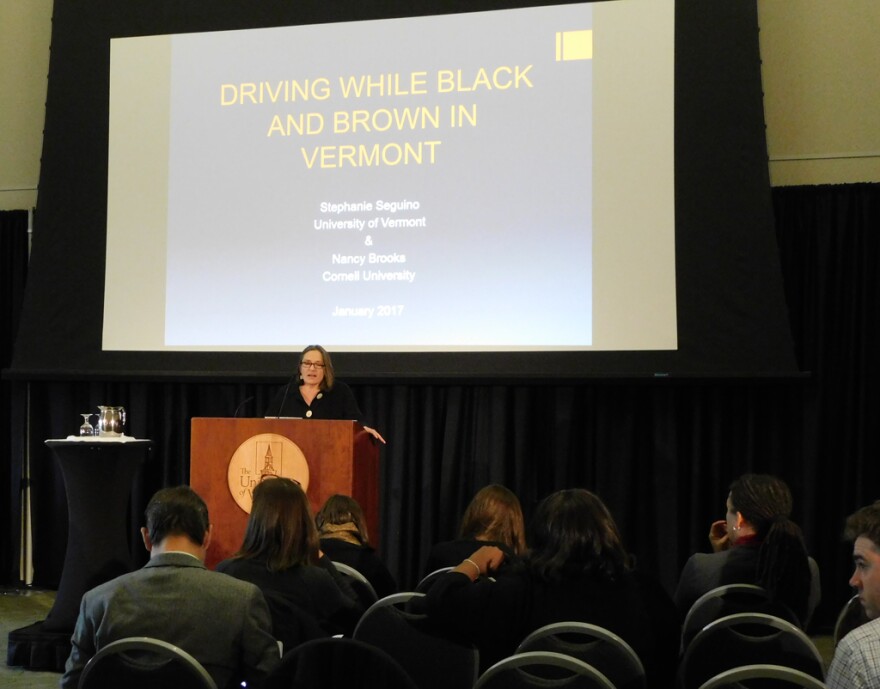Researchers at the University of Vermont have released the results of the first ever statewide study on racial profiling by Vermont police.
The study “Driving While Black and Brown in Vermont” profiles the state’s 29 largest police departments, including the State Police and University of Vermont police force. It found notable disparities in how drivers are treated by race.
Lead author Stephanie Seguino presented the findings Monday. She noted that 31 states collect race data in policing, but Vermont is one of only a few that both analyzes and makes it public. “The race data project is an important one. Its key purpose is to collect and analyze stop data. It really helps to facilitate community policing dialogues. For many years in Vermont there have been conversations between the police and communities of color about disparities in policing. However there was no evidentiary basis on which to interrogate those concerns and we now have that data.”
Seguino outlined key findings including stop rates and post-stop outcomes. “So here's what we found at the state level: black drivers are arrested at twice the rate of white drivers. We also found that black drivers are searched at four times the rate of white drivers and that Hispanic drivers are searched at a rate that is almost three times the rate of white drivers. Although the search rates are higher than white or Asian drivers, Asian and white drivers are more likely to be found with contraband than are black and Hispanic drivers. We also found that amongst drivers stopped black and Hispanic drivers were more likely to be given a citation than are white drivers.”
Vermont Attorney General T.J. Donovan notes that most agencies voluntarily turned over their data in an effort to determine if there are racial disparities. “For me that is the first step. The number of organizations, the number of agencies that voluntarily turned over their data in order to have it looked at I think is what's different here. Some of the numbers were a bit of a surprise but again I think that's a good thing. You've got to diagnose what the problem is and then you've got to be able to create that benchmark and measure against that benchmark whether or not we're making progress. People want to do this in order to get it right because at the end of the day it is treating people equally under the law. And I know that Vermont law enforcement is invested in doing it the right way.”
Attorney Robert Apel, a former head of the Vermont Human Rights Commission, notes that this analysis is a follow-up to a traffic stop study involving four Chittenden County police agencies released about a decade ago. Apel finds the current conclusions are consistent with the previous smaller sampling. “All the training and all the policy in the world if you don't hold officers to account you're not going to bend the curve. So it really is incumbent on command staff, chiefs, deputy chiefs, whatever to do the work. We now have the tool. It's certainly sufficient numbers and the tendencies are like over and over and over and over again. It's enough to act on. So calling individual officers to account and explain the disparities hopefully will encourage them to redouble their efforts to comply with their mandate which is objective individualized suspicion of criminal activity. Not race. Not color.”
Burlington Police Chief Brandon del Pozo says his department has been committed to the project for a number of years and they hope to understand how the data relates to their day to day operations. “If we're stopping people and searching them disproportionately and not finding contraband, that is troubling. So we use this is a springboard for these very nuanced analyses that we can look at cops square in the face and say these are areas where we need to change and these are areas where we think we can defend our practices more easily.”
Black people make up 1.6 percent of Vermont’s population.



